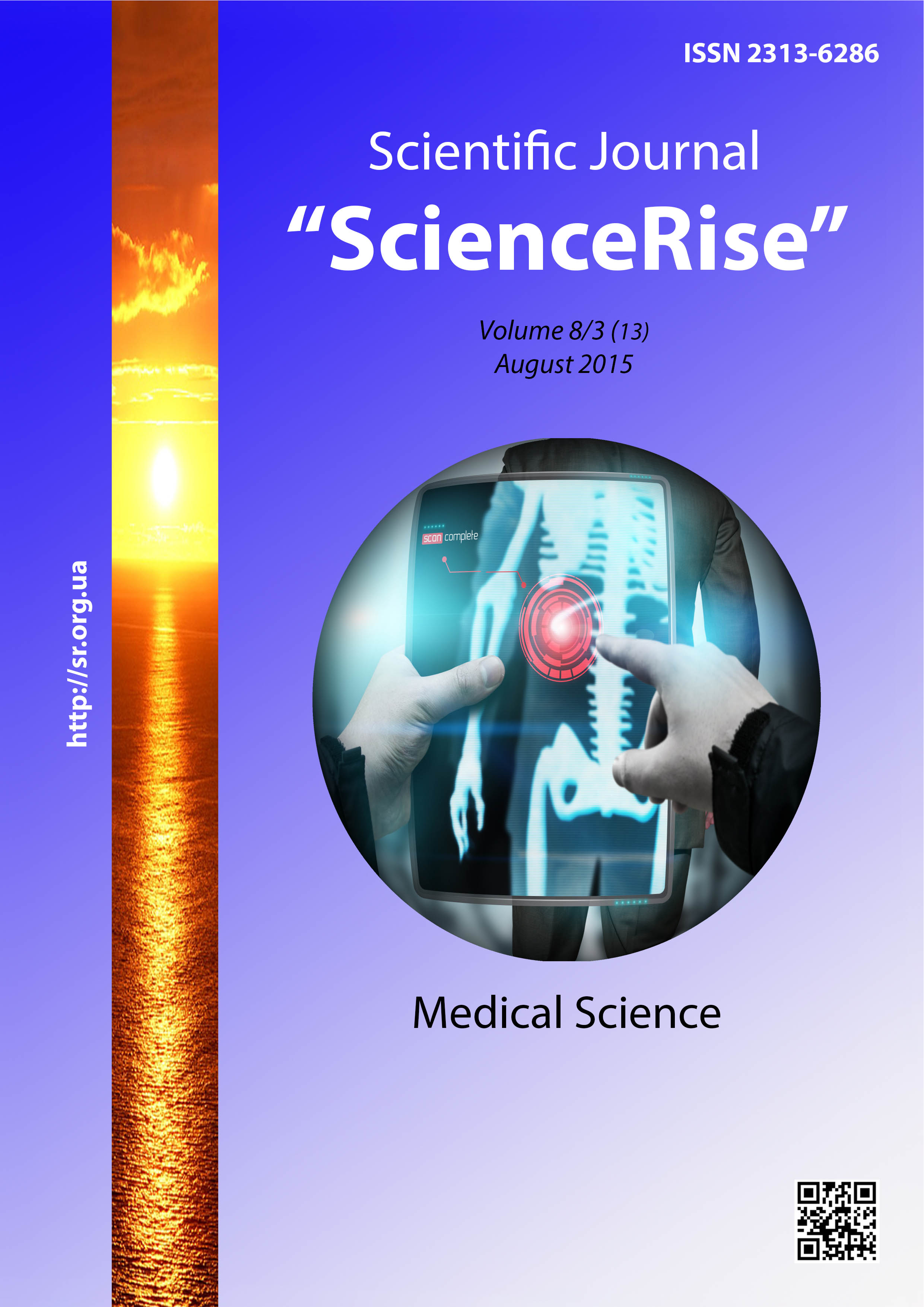Infection complications of the surgical area and comparative characteristics of sensitivity of microorganisms to antibiotics of reserve in surgical departments
DOI:
https://doi.org/10.15587/2313-8416.2015.47901Keywords:
Complicated intraabdominal infections, antibiotics of reserve, wound surface, purulent infections, sensitivity.Abstract
Aim. To define the character of microbial contamination of the complicated intraabdominal and traumatological wound surfaces, to define the sensitivity of microorganisms to antibiotics of reserve for detecting antibiotics of reserve in surgical and traumatological departments for rational and antibacterial therapy.
Method. In surgical, traumatological and intensive care departments during the period 2013-2014 years were examined 296 patients. Among them106 patients from resuscitation, 116 patients from the general surgery department, 74 patients with traumatological pathology. Quantitative and qualitative detection of microorganisms was carried out by inoculation of material on differential-diagnostic nutrients mediums (agars).
Sensitivity test was carried out with pure microorganism culture that was separated before on the dense nutrient medium.
Results. The results of research were interpreted according to decree of the Ministry of Public Health of Ukraine № 167 05.04.2007. According to the results of research 106 patients get help in intensive care department, 116 patients in abdominal surgery department, 74 patients in traumatological one.
In patients from intensive care department the sensitivity of microorganisms to reserve antimicrobial preparations was kept only for meropemen and tygecycline. In reserve antimicrobial preparations 100% sensitivity was observed only in tygecycline and meropenem relative to E. coli. All other microorganisms except E. coli, demonstrated the strict tendency to increase of % of stability.
The most of 116 patients from surgical department with infections of surgical area (ISA) had pancreatonecroses - 28 (32,7 %) patients.
The sensitivity of microorganisms to antibacterial preparations in patients who underwent treatment in surgical department with infection of surgical area demonstrated that only meropenem relative to Ps. Aeruginosa can be an agent of choice. Ps. aeruginosa has sensitivity to meropenem in 100% cases.
The patients of traumatological department with purulent wound complications are 25 % of all hospital patients with complications in surgical area.
The most patients had complicated fractures - 22 patients (29,7 %). 100 % sensitivity was detected to tygecycline in Enterobacter aerogenes.
Conclusions. At analysis of data of sensitivity spectrum of antimicrobial preparations in gram-positive and gram-negative flora in departments it was detected the high sensitivity of enterobacteriums to almost all studied groups of preparations.
References
Guchev, Y. A., Volkov,Y. P., Yvanova, A. M. (2007). Pankreonekroz. Vozmozhnosty antybakteryal'noj terapyy y profylaktyky. Rus. med. Zhurn, 12, 965–973.
Kubyshkyn, V. A., Tarasenko, B. C., Nykytenko, V. Y. (2000). Ostrij pankreatyt y translokacyja bakteryj. Vestn. Hyrurgyy, 6, 86–89.
Boncevych, R. O. (2005). Osoblyvosti diagnostyky ta likuvannja nozokomial'nyh pnevmonij u hvoryh hirurgichnogo profilju. Rukopys. Instytut ftyziatrii' i pul'monologii' im. F. G. Janovs'kogo AMN Ukrai'ny, Kyi'v.
Antybiotyky: likujut' abo kalichat'. Available at: http://newsme.com.ua/ua/tech/health/2911047/
Bagrij, O. S., Godlevs'kyj, A. I., Bjelkanija, G. S. (2002). Dynamika mikrocyrkuljatornogo vidobrazhennja zagojennja pisljaoperacijnyh ran. Visnyk Vinnyc'kogo derzhav- nogo medychnogo universytetu, 2, 416–422.
Zheliba, M. D., Prevar, A. P., Funikov, A. V. (2005). Optymizacija kompleksnogo likuvannja gostryh gnijno-zapal'nyh zahvorjuvan' m’jakyh tkanyn. Rany m“jakyh tkanyn ta ranova infekcija. Kyi'v, 28.
Dellindzher, Je. P. (2001). Profilakticheskoe primenenie antibiotikov v hirurgii. Klin. mikrobiol. i antimikrob. Himioterapija, 3, 260–265.
Osmon, D. R. (2000). Antimicrobial Prophylaxis in Adults. Mayo Clinic Proceedings, 75 (1), 98–109. doi: 10.4065/75.1.98
Ob unifikacii mikrobiologicheskih metodov issledovanija primenjaemyh v kliniko – diagnosticheskih laboratorijah LPU (1985). Prikaz № 535 ot 22 aprelja 1985 goda.
Frampton, J. E., Curran, M. P. (2005). Tigecycline. Drugs, 65 (18), 2623–2635. doi: 10.2165/00003495-200565180-00008
Zubkov, M. N. (2004). Sbor, transportirovka biologicheskogo materiala i traktovka rezul'tatov mikrobiologicheskih issledovanij. Slinich. mikrobiologija i antimikrobnaja himioterapija, 2, 143–154.
Houlta, Dzh. (1997). Vyznachnyk bakterij Berdzhi. Moscow: Myr, 800.
Downloads
Published
Issue
Section
License
Copyright (c) 2015 Виктория Владимировна Поточилова, Сергій Іванович Бабак

This work is licensed under a Creative Commons Attribution 4.0 International License.
Our journal abides by the Creative Commons CC BY copyright rights and permissions for open access journals.
Authors, who are published in this journal, agree to the following conditions:
1. The authors reserve the right to authorship of the work and pass the first publication right of this work to the journal under the terms of a Creative Commons CC BY, which allows others to freely distribute the published research with the obligatory reference to the authors of the original work and the first publication of the work in this journal.
2. The authors have the right to conclude separate supplement agreements that relate to non-exclusive work distribution in the form in which it has been published by the journal (for example, to upload the work to the online storage of the journal or publish it as part of a monograph), provided that the reference to the first publication of the work in this journal is included.

